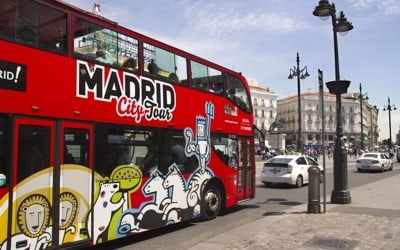
Hapsburgs Madrid walking tour and skip-the-line entrance to Prado Museum
Discover the most emblematic buildings from the Renaissance and Baroque periods of Madrid. Habsburg is the name given to Madrid when the Habsburg dynasty reigned in Spain. This reign began with Charles I, who enriched the city with palaces and monuments. Later on, Philip II made it the capital of Spain and the city grew dramatically.
The journey through the Renaissance and Baroque style buildings of this era is perhaps one of the most picturesque and representative of Madrid. During the tour, you will stop at one of the most emblematic cafés of this popular area of Madrid, where you will be offered a drink.
The building that today houses the Prado Museum was designed by architect Juan de Villanueva in 1785. It was constructed to house the Natural History Cabinet, by orders of King Charles III. However, the building's final purpose - as the new Royal Museum of Paintings and Sculptures - was the decision of the monarch's grandson, King Ferdinand VII, encouraged by his wife Queen Maria Isabel de Braganza.
Prado Museum opened to the public for the first time in November 1819. The museum's first catalog, published in 1819, included 311 paintings, although at that time its collection comprised just over 1,510 pictures from the various Reales Sitios (Royal Residences). The exceptionally important royal collection, which represents the foundation of the museum's collection as we know it today, started to increase significantly in the 16th century during the time of Charles V and continued to thrive under the succeeding Habsburg and Bourbon Monarchs.
It is thanks to them that we can enjoy such masterpieces in the museum including "The Garden of Earthly Delights" by Bosch, "The Nobleman" with his hand on his Chest by El Greco, "Las Meninas" by Velázquez and "The Family of Carlos IV" by Goya.
The visit will take place in chronological order, starting with the exhibit hall where the masterpieces of J. Bosch (El Bosco) (1450-1516): The Table of the 7 Deadly Sins, The Hay Wain, The temptations of San Antonio, The Stone of Madness and The Garden of Delights. You'll then continue on to the rooms devoted to the Greco (1540-1614): The gentleman's hand on his chest, The Trinity, Christ embraced the cross and The Annunciation.Velázquez (1599-1660): The Worship, Drunkards, Equestrian Portraits, the Forge of Vulcan, The Christ, The spinners, Spears and Las Meninas. At the end of your visit, you'll enter the area dedicated to Goya (1746-1828): The family of Carlos IV Pictures, The Shootings of May 2, Pestles and Black Paintings.



















